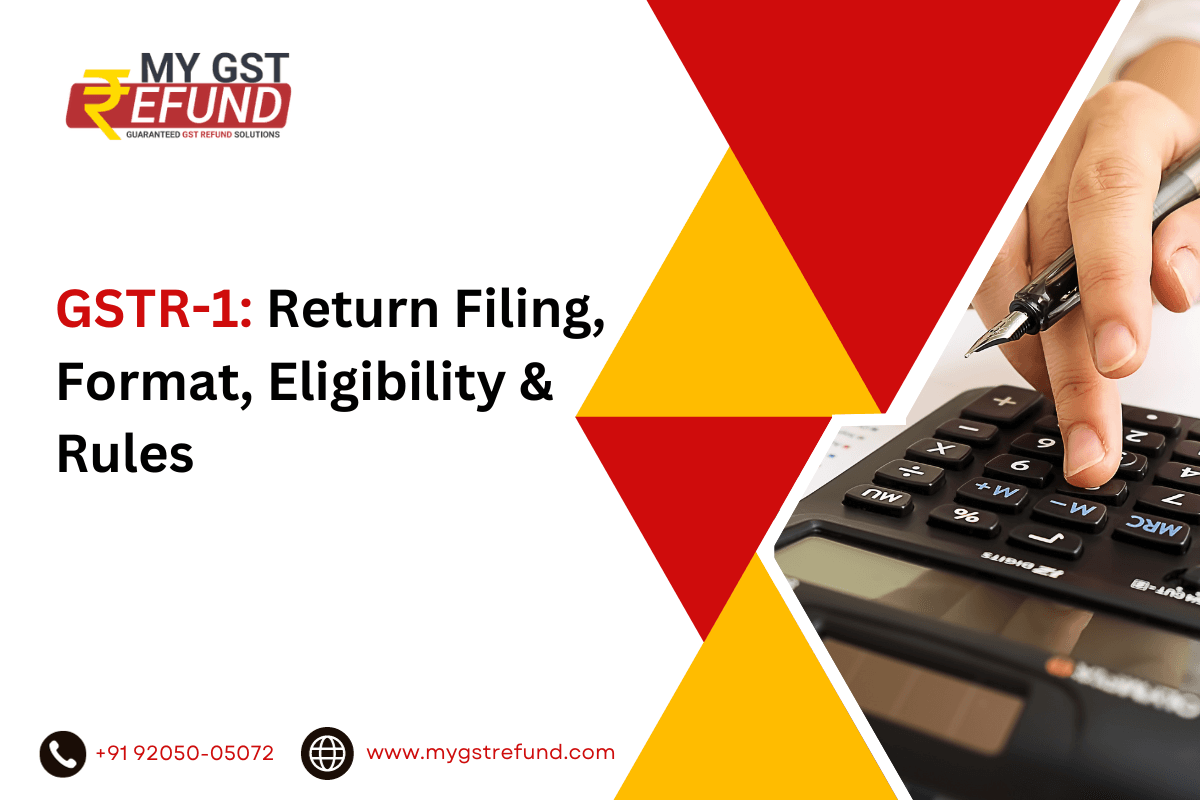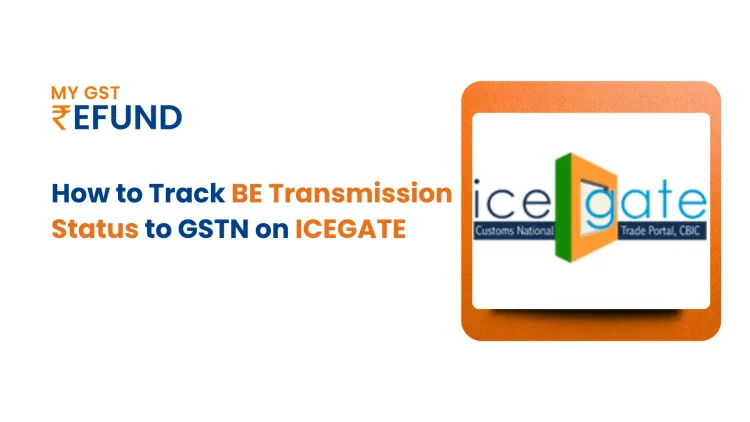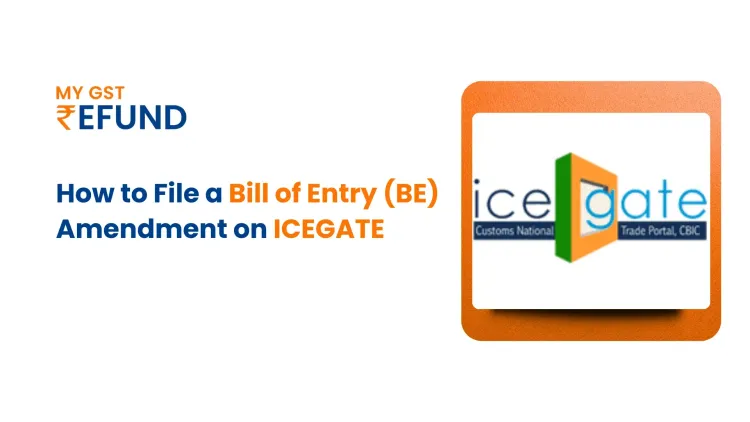GSTR-1: Return Filing, Format, Eligibility & Rules
Published on: Tue Dec 05 2023
GSTR-1: Return Filing, Format, Eligibility & Rules
GSTR-1, also known as the Goods and Services Tax (GST) Return 1, is a crucial document that registered taxable persons under the GST regime are required to file electronically on the GST Portal. This return provides a detailed account of all outward supplies of goods or services made by the taxpayer during a specific tax period. It serves as a comprehensive source of information for the Central and State tax authorities to assess the taxpayer's GST liability.
GSTR-1 Due Date
The due date for filing GSTR-1 depends on the taxpayer's turnover and filing frequency. For taxpayers with a turnover of more than ₹1.5 crore in the previous financial year, the due date for filing GSTR-1 is the 11th day of the succeeding month. For taxpayers with a turnover of up to ₹1.5 crore, the due date for filing GSTR-1 is the 13th day of the month succeeding the end of every quarter.
GSTR-1 Due Date for Quarterly Return
Taxpayers who file GSTR-1 quarterly have the following due dates:
Quarter 1 (April-June): 13th of July
Quarter 2 (July-September): 13th of October
Quarter 3 (October-December): 13th of January
Quarter 4 (January-March): 13th of April
GSTR-1 Due Date Monthly
Taxpayers who file GSTR-1 monthly have the following due dates:
Month 1 (April): 11th of May
Month 2 (May): 11th of June
Month 3 (June): 11th of July
Month 4 (July): 11th of August
Month 5 (August): 11th of September
Month 6 (September): 11th of October
Month 7 (October): 11th of November
Month 8 (November): 11th of December
Month 9 (December): 11th of January
Month 10 (January): 11th of February
Month 11 (February): 11th of March
Month 12 (March): 11th of April
GSTR-1 Late Fee
In accordance with GST regulations, the late fee for the non-submission of GSTR-1 is Rs 200 per day for delayed filing, comprising Rs 100 as per the CGST Act and Rs. 100 as per the SGST Act. This late fee is calculated from the day following the last filing date.
However, as per notifications issued until February 2021, there has been a reduction in late fees to Rs 50 per day and Rs 20 per day for nil returns. It's essential to emphasize that, at present, the GST portal does not mandate the payment of late fees for GSTR-1 as part of the payment challan in PMT-06 during the filing of GSTR-3B.
According to CGST notification 20/2021 dated June 1, 2021, the maximum late fee is applicable from June 2021 onwards.
Individuals who have no outward supplies in the tax period will not incur the maximum late fee of Rs 500 (Rs. 250 per Act). Conversely, individuals with a total turnover of Rs 1.5 crores in the previous fiscal year, excluding nil return filers, are subject to a maximum late fee of Rs 2000 (Rs. 1,000 per Act). Individuals with an average annual turnover exceeding Rs 1.5 crores but not exceeding Rs 5 crores in the previous fiscal year, excluding nil filers, may face a maximum late fee of Rs 5000 (Rs. 2500 per Act). There is no modification in the maximum late fee for assesses whose total turnover surpasses Rs 5 crores, and it remains fixed at Rs 10,000.
Also Read: GSTR-2B Guide: Features, Benefits, and How to Use
GSTR-1 Form PDF
The GSTR-1 form is available on the official GST portal in both online and offline modes. Taxpayers can choose the mode that best suits their convenience. The online mode involves direct data entry on the portal, while the offline mode allows users to download the GSTR-1 offline utility, fill in the details, and upload the file.
Additionally, the GSTN (Goods and Services Tax Network) has introduced an Excel-based GSTR-1 preparation tool to further simplify the filing process. This tool enables taxpayers to prepare their GSTR-1 offline and later upload it to the GST portal.
GSTR-1 Format
The GSTR-1 format is structured to capture comprehensive details of outward supplies made by a taxpayer. The form consists of multiple tables, each dedicated to specific types of transactions. Here is an overview of the key sections:
GSTIN and Legal Name of the Registered Person: This section captures the unique GST Identification Number (GSTIN) and the legal name of the taxpayer.
Period for which the Return is Filed: Taxpayers need to specify the month or quarter for which they are filing the GSTR-1.
Details of Outward Supplies: This is the core section where taxpayers provide information on sales transactions. It includes invoices issued, debit notes, credit notes, and advances received.
Taxable Outward Supplies to Registered Persons: Taxpayers must report the value of supplies made to other registered businesses, along with the corresponding tax details.
Outward Supplies to Unregistered Persons: Details of supplies made to unregistered entities, along with the tax implications, are recorded in this section.
Zero Rated Supplies and Deemed Exports: Transactions falling under the category of zero-rated supplies or deemed exports are outlined here.
Amendments to Taxable Outward Supply Details of Earlier Tax Periods: Any corrections or modifications to previously submitted details are accounted for in this section.
HSN-wise Summary of Outward Supplies: The Harmonized System of Nomenclature (HSN) codes for goods and services are provided in this section, offering a detailed classification of supplies.
Document Details: In this section, taxpayers furnish details of invoices, debit notes, and credit notes issued during the reporting period.
Supplies Made to Composition Taxable Persons and Other GST and Non-GST Dealers: This section covers supplies made to businesses under the composition scheme and other dealers, both within and outside the GST ambit.
Exempted, Nil-Rated, and Non-GST Outward Supplies: Details of supplies that are exempt from GST, nil-rated, or fall outside the GST purview are disclosed here.
Amendments to Exempted, Nil Rated, and Non-GST Outward Supply Details of Earlier Tax Periods: Similar to amendments for taxable supplies, any modifications to exempted, nil-rated, or non-GST supplies are documented here.
Also Read: GSTR-3B Guide: Return Filing, Format, Revision and Due Dates
Eligibility for Filing GSTR-1
All registered taxable persons, except input service distributors (ISD), composition taxpayers, persons liable to deduct tax under Section 51, and persons liable to collect tax under Section 52, are required to file GSTR-1.
Frequently asked questions
What is in GSTR 1?
GSTR-1 is a register of outward supplies received from sales, exports, and debit/credit notes for registered businesses. GSTR-1 can be filled either monthly or quarterly depending upon the prescribed turnover eligibility for such registered entities.
What is the difference between GSTR 1 and 3B?
GSTR-1 lists supplies made or received. GSTR-3B is a summation of the sales, purchases, and tax paid by a particular taxpayer for the period of taxation.
What is GSTR 1 due date?
Monthly: 11th of the succeeding month.
Quarterly (QRMP Scheme): 13th of the month succeeding the quarter.
Who is liable to pay GSTR 1?
GSTR-1 is applicable for those registered taxpayers who are not under the composition scheme or any of the exemptions. They will also have inter-state or taxable supplies.
Related Posts




